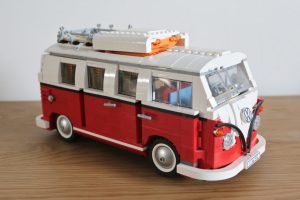New Year, new project! ‘Operation DIY Sofabed’ is underway.
Hello, lovely peeps! I hope you’ve had a lovely Christmas and are feeling refreshed and ready for all 2018 has in store.
I do love the bright, spangly newness of a new year, with all its potential and possibilities. This year I’ve resisted the temptation to draw up a formal list of New Year’s Resolutions, though. Instead, I’ve opted for a more relaxed approach. I’ve sketched out a few informal ideas and goals for this year, rather than setting myself up to fail within two weeks of the ink drying on my resolution list.
A Christmas project.
As with previous years, though, I’ve started 2018 with hands bearing the bruises and cuts of yet another Christmas DIY project. Yes, the DIY sofabed project is well underway.
Last year, (or a few weeks ago!), I told you about my crazy plan to build a DIY sofabed as part of our guest room makeover because the one I had in my head didn’t exist in real life (HERE). So far (or should I say ‘sofa’?!) I’ve built the basic frame, upholstered a couple of mattresses, covered some back cushions and built a trundle bed to roll underneath the sofa to hide the second mattress.
Note to self: In future, DO NOT sell the existing guest bed before you’ve finished making the sofabed to replace it…Especially if your Mother-in-Law falls and cracks a rib as soon as you’ve agreed on a collection date for the bed and she needs to stay with you for a few weeks! Eeks! Thankfully, the sofabed frame was more or less ready (sans upholstery), so we could use it as a base for the mattress, which isn’t getting picked up for another week or two.
Operation DIY Sofabed.
I’ve certainly thrown myself into this project, spurred on by Mr T’s challenge that I may have bitten off more than I can chew! In fact, whilst the rest of the family chilled out post-Christmas and read books and snuggled up on our existing beds and sofas, I spent hours in a freezing cold garage building a sofabed! The sofabed we hope to have in the guest room instead of a bed.
As I explained in my earlier post, we only have guests a couple of weeks of the year (unless they’ve fallen unexpectedly and fractured a rib). That’s why we decided to swap our ginormous room-filling kingsize bed for a sofabed. It means we can use the space as a living space for most of the year, converting the sofa into twin or kingsize bed configurations, for those few weeks when we have visitors to stay.
Making things easier.
One thing I’ve learned already from this DIY project is that having the right tools and a wood yard (or DIY superstore) who will cut wood and sheet materials to size free of charge, makes all the difference.
In fact, with the help of my pocket hole jig, compound mitre saw and the lovely folks at Bassingfield Wood Yard, I was able to build the sections of the sofabed frame and trundle fairly quickly and painlessly. I also opted to buy competitively priced readymade rolls of bed slat from eBay, rather than make my own.
My compound mitre saw made light work of cutting the timber down to size. Honestly, I think I would have given up if I’d had to cut everything with a standard handsaw! Another fantastic tool I invested in after watching Youtube videos of woodwork projects is the Wolfcraft Pocket Hole Jig. The joints you get using a pocket hole jig feel really strong and secure and, if you use pocket hole screws, the wood shouldn’t split, either.
I have to say, I felt a great sense of achievement when I’d built the two parts of the sofabed frame and the trundle. Mr. T was suitably impressed too and he’s started to get excited about the guest room project now he can see my ideas coming to life.
Teething problems.
One of the problems with this particular DIY project is I’m ‘making it up as I go along.’ Well, there’s more to it than that, but I’m essentially having to build a working prototype. Obviously, I had a design plan in my head, which I’d thought through in great detail, but I’ve still had to make adjustments to my design along the way. Only when I started to build the sofabed did I realise some of my ideas wouldn’t work. It meant I had to undo things I’d spent hours doing along the way. My mates at the woodyard assure me that the next build will be quicker. I say – I don’t think there will be a next time!
So what went wrong?
1. Initially, I decided to use webbing as the base for the mattress when it’s in its ‘sofa’ formation. (when the sofa opens out into a bed, the base is made up of fixed pine slats). It took me hours, with the aid of a webbing stretcher, to pull the webbing tight enough to provide a suitable base for the mattress. Unfortunately, in doing so, it put so much stress on the wood it twisted the frame! I’d also decided to sandwich 4cm memory foam between the slats and the webbing to give additional support. However, the memory foam added more weight to the frame and it didn’t look right.
In the end, I decided to use sprung slats for the base. Conveniently, I had a set of sprung slats from an old pop-up bed I no longer used. After cutting them down to size and reusing the slat holders and rail, I had a much sturdier, lighter sofa base – it looks better too.
2. Perhaps my biggest error was forgetting to allow for the height of the frame I constructed for the sofa mattress base. It added 4.5cm to the height of the sofa seat so when I sat down it felt too high and not very comfortable. The ideal height from floor to the top of the seat cushion for a sofa is 19 inches or 48cm. The height of mine was almost 55cm.
I really didn’t want to alter the frame, but because comfort is one of the most important requirements of this sofabed, I didn’t have a choice if I wanted the project to be a success. I decided to take 4 cm off the overall height of each of the two sections of the sofa bed. The problem with making the required adjustments was that I’d glued, as well as screwing, the frame together. Also, the legs were part of a square frame, rather than simply being 8 individual free-standing legs! Arghhh!

Altering the height of the bed frames wouldn’t be easy as the legs were part of a rectangular frame.
To make matters worse, I’m rubbish at using a handsaw. I didn’t trust myself with a circular saw or jigsaw either. Consequently, I was worried I wouldn’t be able to make 8 straight, equivalent cuts. I wrestled with how to do it, and in the end I borrowed a neighbours tenon saw to separate the glued horizontal crossbars of the frames from the legs. Then I used my compound mitre saw to cut 4cm off each leg. This involved me laying the bed frames on their side and manoeuvring the legs into position so I could cut them. Thankfully, it worked!
DIY Sofabed: Progress to date.
So far I’ve completed:
1. Wooden bed/sofabed frames.
The two frames that comprise the sofabed and become twin or kingsize bed options when opened out, are complete.
2. Trundle bed frame.
From the outset, I wanted the second mattress to be stored on a wheeled wooden trundle which could be concealed behind an upholstered drawer front under the sofa. Not only did it seem like a neat, practical solution, it also meant there was the option of creating twin beds (by removing the back cushions off the sofa and pulling out the trundle), without having to ‘flip’ the sofa over to make the bed(s).
3. Back cushions.
I’ve upholstered the back cushions for the sofa. Conveniently, the dimensions of the back cushions of the corner sofa in our extension provided the perfect template. I took one of them to a local foam company DPG Foam Converters Ltd, and they measured it and made me three cushions of the same dimensions. Not only are the custom-made cushion inners great value, they’re better quality than the original cushion inners, too, using a softer foam, covered in batting and stockinette.
I’ve never upholstered sofa cushions before, so I was relieved to be able to copy an existing template, with its removable zipped cover. I decided to adapt the pattern, though, as I liked the idea of button-back cushions, rather than plain ones.
After watching a few Youtube videos, I ordered a ginormous upholstery needle, waxed cotton twine, some 19mm metal self-cover buttons and a device to help to make-up the self-cover buttons. It took me ages to make the buttons! Part of the problem was the thickness of the upholstery fabric and how much it tended to fray. Nevertheless, after ruining 3-4 metal buttons, I finally got the hang of it and managed to make ten covered buttons (for the cushions and headboards).
4. Headboards.
I think headboards really finish off a bed. In my opinion, a bed isn’t a ‘proper’ bed without a headboard! That’s why I decided to make upholstered buttoned headboards to fix to the bed(s). I opted for two headboards, so they can be used in the twin bed configuration or butted against each other when the bed is in its kingsize configuration.
As with the rest of this DIY project, more detailed instructions will follow.
I want somewhere to store the headboards when they aren’t in use, so I’m hoping to strap/fix the headboards to the underside of the trundle frame. In my head, this should be possible, but I haven’t tried it yet!
I’ve ordered 2 pairs of struts for the headboard (to be honest, the quality isn’t great and I wish I’d made my own). I’ve also ordered headboard bolts and tee nuts to fix the bolts to the wooden frame.
What’s next?
There’s still some way to go before I can determine whether Operation DIY Sofabed is a success…Or an epic failure! So far I can report that the wooden frame is able to support a mattress and a Mother-in-Law, so that’s something!
Here’s a list of the remaining stages of Operation DIY Sofabed:
1. Upholster the trundle bed.
2. Make and upholster the drawer front for the trundle bed.
This will conceal the trundle bed beneath the sofa when not in use.
3. Make a removable bolster to support the back cushions.
Because the sofabed frame needs to be relatively low to make sure the seat height is correct, it means that the height of the sofa frame isn’t high enough to support the back cushions of the sofa. It only has a 15cm clearance above the seat cushion, rather than the 20cm the sofa in our extension has. It also needs to be an angle of 70 degrees as the back cushions have been cut at an angle at the base to rest against the bolster.
When the sofabed is opened into a bed, I need to be able to remove this bolster so the two halves of the bed frame are the same height.
4. Fit loose pin hinges.
To enable the sofa to be flipped to create a kingsize bed, or separated into twin beds, I need to join the two sections of the sofabed at the front with loose pin hinges.
6. Upholster the sofabed/bed frames.
This is the bit I’m most nervous about! Covering a few cushions is very different to upholstering an entire sofa. I’ve watched a few upholstering videos on Youtube, but my sofabed isn’t like a normal sofa, so I’ll have to improvise. I’m a perfectionist so it has to look right. Let’s hope I don’t fall at the final upholstery hurdle!
Stay tuned!
I hope my DIY exploits have inspired you. I’ve never taken on a DIY project as ambitious as this before but with the help of Youtube, Pinterest and the help of Bassingfield Wood Yard and DPG Foam Converters Ltd, things are going better than I expected. Let’s hope the next stages are as successful!
Keep an eye on my blog for further updates and a tutorial.
Over to you.
What do you think of my DIY sofabed so far? Are you planning any DIY or renovation projects this year? Have you ever thought of making your own furniture or having a go at upholstery? As always, I’d love to hear from you.








25 Comments
Leave your reply.